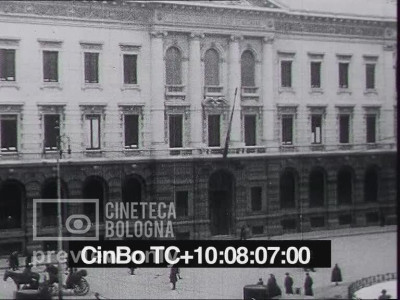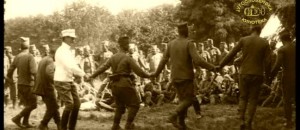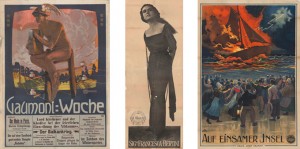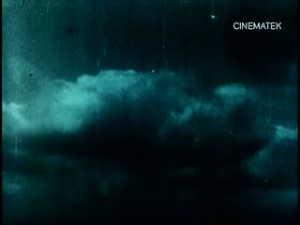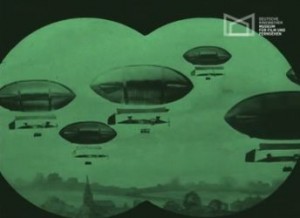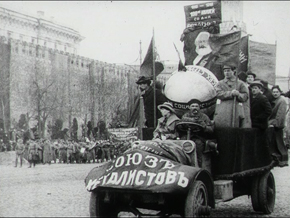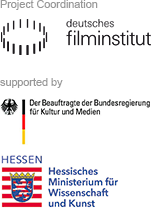Highlights
Selected highlights of the project partners’ collections digitised within EFG1914.
Befana di guerra (IT 1915)
from the collections of Fondazione Cineteca di Bologna
La Befana is an Italian Christmas tradition. On the eve of Epiphany (Three Kings Day), celebrated on 6 January, an old woman delivers gifts to children in a similar way to Santa Claus.
Befana di guerra is a very brief and rare fundraising clip from World War I. Shot in Milan, it shows images of the city center (La Scala and Banca Commerciale Italiana can both be recognized). The film tells the story of a child which begs the befana for the victory of Italy and the return of her father, a soldier in the war. The befana reaches the front and enters a tent where an allegory of Italy is singing the national anthem to the soldiers and asks the befana to collect money. The befana then goes to factories, the houses of wealthy people and to farmers to fill her stocking with money. Italians are invited to contribute to the New Consolidated Loan and a crowd of people shows up at the Banca Commerciale Italiana in Milan. The child is happy for her father’s return, which happens under the kind gaze of the allegory of Italy standing behind the door. “Befana di guerra” has been restored in collaboration with CNC – Archives Françaises du Film.
>>Watch Befana di guerra on the EFG portal
Czechoslovak volunteers in WWI
from the collections of the Národní filmový archiv
At the beginning of WWI an independent Czechoslovak state did not exist – Bohemia, Moravia and Slovakia were parts of the Austria-Hungary empire. Millions of Czech and Slovak soldiers fought in Austrian trenches at the Russian, Italian and Serbian front. Soon after the beginning of the military operations, Czech intellectuals and politicians Tomáš Garrigue Masaryk and Edvard Beneš started to organise from abroad a political resistance movement. They fought for the idea of overthrowing Austria-Hungary and establishing the independent Czechoslovak Republic. Czech and Slovak people living abroad – mostly in Russia and France – formed small units of volunteers fighting for the Russian and French army. A huge number of Czech and Slovak POWs – especially in Russia and Italy – joined them in 1917 and 1918. At the end of WWI more than 100,000 volunteers served these troops. During the campaign, the military camera operators made fascinating shots of different length and content. More or less, they are all considered lost. However, some shots were used in documentary films from the twenties and thirties. In the framework of EFG1914, NFA will make available unique montage films documenting important moments and the daily life of the volunteers.
Počátek čsl. odboje na Rusi / Beginning of Czechoslovak Resistance Movement in Russia (CZ 1928) depicts the vow taken by the volunteers on 28th September 1914 in Kiev, the ceremonial blessing of the standard and various scenes from the trenches or technical facilities.
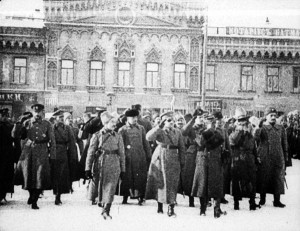 Českoslovenští dobrovolníci ve světové válce 1914-1918 /Czechoslovak Volunteers in the World War 1914-1918 (CZ 1934) creates a visual history of the Czechoslovak resistance movement and brings unique shots of personalities, events and daily life of the volunteers during the campaign through Siberia.
Českoslovenští dobrovolníci ve světové válce 1914-1918 /Czechoslovak Volunteers in the World War 1914-1918 (CZ 1934) creates a visual history of the Czechoslovak resistance movement and brings unique shots of personalities, events and daily life of the volunteers during the campaign through Siberia.
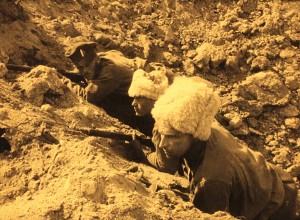 On the occasion of the 10th anniversary of the Czechoslovak Republic in 1928, the Ministry of Defense produced the feature film “Za československý stát / For the Czechoslovak state” (CZ 1928) which tells the story of the military resistance movement from the perspective of three ordinary soldiers. A notable part is the first cinematic reconstruction of the battle of Zborov (2nd July 1917). Austrian troops were defeated by the Czech volunteers in Russian uniforms. Many Czech soldiers fell on both sides of trenches. The anniversary of the battle became a commemoration day in the Czechoslovak Republic (1918 – 1938) and many monuments dedicated to the „Heroes from Zborov” were unveiled in Czech towns and villages. (By Tomáš Lachman, Národní filmový archiv, Prague)
On the occasion of the 10th anniversary of the Czechoslovak Republic in 1928, the Ministry of Defense produced the feature film “Za československý stát / For the Czechoslovak state” (CZ 1928) which tells the story of the military resistance movement from the perspective of three ordinary soldiers. A notable part is the first cinematic reconstruction of the battle of Zborov (2nd July 1917). Austrian troops were defeated by the Czech volunteers in Russian uniforms. Many Czech soldiers fell on both sides of trenches. The anniversary of the battle became a commemoration day in the Czechoslovak Republic (1918 – 1938) and many monuments dedicated to the „Heroes from Zborov” were unveiled in Czech towns and villages. (By Tomáš Lachman, Národní filmový archiv, Prague)
A Pioneer of War Reporting: Dyordye Dyoka Bogdanović
from the collections of Jugoslovenska Kinoteka
>>Watch the Bogdanović collection on the EFG portal
When the Second Balkan War broke out in June 1913, Dyordye Dyoka Bogdanović (1860 – 1914) decided to send camera operators to the front. During the month of July, the men shot footage of battles, of devastated villages, of war victims, of prisoners of war, and of soldiers in their everyday life. Out of this footage, Bogdanović quickly compiled a number of short documentaries and newsreels. These films are unique not only because few other moving images of the Second Balkan War exist, but also because they rank among the earliest cinematic recordings showing soldiers in action in real war situations.
For decades, the films of Dyordye Dyoka Bogdanović (1860 – 1914) have been considered lost, when a young student came across them in 1982. Bogdanović’s family had kept thousands of meters of archival footage filmed during 1913-1914 from the public eye. Since then, the Jugoslovenska Kintotheka takes care of the Bogdanović collection.
Read the full story on the Europeana blog
Posters from the Desmet Collection
from the collections of EYE Film Institute Netherlands
On European Film Gateway, EYE Film Institute Netherlands has made an impressive amount of posters from the Desmet Collection available for the first time. 850 beautiful posters from the period between 1907 and 1916 can be viewed and enjoyed.
>>Watch the poster collection on the EFG portal
These posters from the 1910s provide a picture of a lesser known period in film history, and many of them are the only remnants of films that have been lost. From an artistic point of view, they reveal the essence of popular art in the early 20th century, with fairytale scenes with elves (Nan in Fairyland) and gnomes, illustrations of orphans, shipwrecks (Auf einsamer Insel) and terrifying spirits. and terrifying spirits. Other posters show crucial scenes of confrontations between characters in the film. We also witness the beginning of the appearance of stars on posters, such as Francesca Bertini, Harry Piel, and Henny Porten.
The humorous posters of Harry Bedos or Achille Luciano Mauzan and the dramatic designs of Vincent Lorant-Heilbronn (Anna Karenine, La Passion) stand out among the collection. We can also see the first signs of expressionist and constructivist posters (Paul Leni: Auf Abwegen, and the posters from the Werkstätten für Grafische Kunst, like Die Welt ohne Männer). The posters printed by Plakatkunstanstalt Dinse, Eckert & Co. (Der Geheimnisvolle Klub, Die Schwarze Natter) are very subtle and creative. American posters are mostly not credited to a designer and are less elaborate than the European posters, of which style contemporary posters still retain.
Read more about the Desmet Collection at www.eyefilm.nl
“La Belgique martyre” (The martyrdom of Belgium, Charles Tutelier, Belgium 1919)
from the collections of Cinémathèque royale de Belgique / Koninklijk Belgisch Filmarchief, Brussels
>> See “La Belgique martyre” on the EFG portal
In 1919 La Belgique martyre was the first post war film production to be made in Belgium and the first patriotic war film in a series of no less than 11 productions. All of them were produced between 1919 and 1924 and bearing pathetic titles like Ame belge, Coeurs belges, La revanche belge or Jeune Belgique. Although most of those films were results of individual initiatives, they are the embryonic results of an emerging cinematographic industry in Belgium. These films characterized by uncompromised patriotism, fierce idolatry of King and country, sacrifice and strong anti-German sentiments were quite popular in the first post war years in Belgium.
La Belgique martyre is the only film produced before the Versailles treaty, recuperating the image of poor little Belgium, created by allied propaganda during the war. The film stresses ‘how Belgium suffered for the victory of justice’ and how the country’s now awaiting ‘a place in the vanguard of nations’. Every possible war crime committed by the Germans comes across: the German disapproval for Belgian neutrality; the invasion; executions of innocent civilians; the so-called francs-tireurs; pillaging and looting of villages; deportations; the battle and sacrifice in the muddy trenches of the Yser River; death on the battlefield and the mourning of the Belgian people. Indeed, emphasis lies on the suffering of the country and its inhabitants. In 1918-1919 Belgium had high expectations of the Versailles negotiations, held in sister country France.
Belgian newsreel pioneer, dynamic businessman and promoter of the Ligue du Cinéma Moral, Hippolyte De Kempeneer first moves from documentaries into the realm of fiction in 1919. He sets up a small studio which he christens the Compagnie Belge des Films Cinématographiques. With his habitual flair, he turns out a long series of jingoistic films, interspersed with adaptations of popular novels and melodramas featuring well-known actors from the Brussels stage.
His first production is The Martyrdom of Belgium (Belgique Martyre), announced as « a patriotic drama in five parts, directed by and starring Charles Tutelier. » Scriptwriter and stage actor Tutelier would later direct another two films – Little Belgians and Flup the Hunter, both now lost – before abandoning filmmaking for his theatre career.
Here he plays Robert, a young Flemish farmer’s son who is entrusted by his father with the family homestead when the latter is mobilized. The bloodthirsty Germans murder his mother, deport his grandfather and set fire to their village. Young Robert succeeds in joining with his father in the trenches and he kills the German who ordered the shooting of his mother. With the signing of the Armistice, he marries his fiancée and rebuilds the ruined farm. The film ends with a title card to the glory of martyred Belgium («You, rise again from your ashes, you little people with grand history, you have progressed to the forefront of the civilized world»), a crowd of extras form the word «Pax» in human letters, a device clearly interpreted from the title sequence to Abel Gance’s J’accuse.
Originally the film came out with a length of 1650 meters. The only surviving nitrate print had a length of 1265m and was restored by the Royal Belgian Film Archive in 1995 using the Desmetcolor method for reproducing tinted and toned film.
[With grateful thanks to Engelen, L. (2005). De verbeelding van de Eerste Wereldoorlog in de Belgische speelfilm (1913-1939). Leuven: Faculteit Sociale Wetenschappen – Departement Communicatiewetenschappen, KU Leuven].
>> See other WWI related films by Cinémathèque royale de Belgique on the EFG portal
“Guerra sull’ Adamello” (War on the mountain Adamello, Italy 1918)
from the collections of Fondazione Cineteca Italiana, Milano

>> See ” Guerra sull” Adamello” on the EFG portal
“Guerra sull’ Adamello” is a documentary film on the military operations of the Italian soldiers on the Adamello, shot by Luca COMERIO (1878-1940), Italian photographer and film pioneer. At the outbreak of First World War Comerio, who gained reputation in filming the war in Lybia in 1911, was the only civilian to obtain the privilege of filiming the war. After the Italian defeat at Caporetto in 1917, the Film Section of the Italian Army was founded, which for political reasons took the monopoly of the shots. Comerio was excluded as a civilian operator, but became the technical director of the film section. Nevertheless, he filmed the entrance of the cavalry in Trento in 1918 and the moment when the banner flag is raised in the city.
“Comerio prefers large ‘panoramic’ impressive shot from above the mountain, moving in single file or line, draw regular tracks in the snow. Other pictures were taken from shelters and bunkers visible at the top of the frame. Comerio often focuses on some details of the everyday life of these soldiers: an ‘alpino’ carrying a large bottle of wine during the arduous climb, the details of the boot worn by a sentinel (shot 36). While the intertitles suggest that this is a true report, these pictures are more likely beeing shot behind the frontiere and during some exercises, in obedience to the criteria imposed by the censors. ” [ Sarah E. Pesenti Campagnoni taken from Dagrada, E. Mosconi, S. Paoli, Multiply the moment.Beltrami, Comerio and Pacchioni between photography and cinema, Notebooks Italian Film Archive Foundation, The Beaver, London, 2007, p.202-203]
“The Airship Destroyer” (Der Luftkrieg der Zukunft, UK 1909)
from the collections of Deutsche Kinemathek – Museum für Film und Fernsehen
>> See “The Airship Destroyer” on the EFG portal
An airship returns to its squadron. Unaware of the looming danger, a young man dreams of his future. He is a talented inventor who has perfected an astonishing flying machine, which he is about to try out. Suddenly, an invincible and inaccessible army of airships attacks with bombs and homing missiles. “The Airship Destroyer” is playing on the ever-recurring fear of invasion and eerily anticipates the air raids of WWI. The creativity of the special effects turns this short film into a real gem of science fiction cinema.
Six years after being first shown, it is projected again in 1915. At that time, the terror of zeppelin air raids hangs over England. Several bombings claim very many lives in Yarmouth and King’s Lynn. London is also aimed at. It is only in 1917 that the creation of anti-airship incendiary bullets and of a special regiment in the Royal Air Force contains the deadly raids. 1,500 British subjects are victims of this modern war instrument foreshadowed in this film.
The airships are made using special effects. The animation and the models are the work of a master: the underestimated Walter R. Booth. Before even contributing to the early stages of cinema, Booth exercises his creativity and exuberant imagination as an amateur magician. From 1889 on, he produces films containing “tricks” that allow him to combine traditional drawing and animation techniques. His taste for science fiction feeds on numerous inspirations, particularly on the French Georges Méliès (1861-1938) and Jules Verne (1828-1905).
In 1906, Booth joins the Charles Urban Trading Company. This production company favors films that cover news, travel, science and natural history. Its founder, Charles Urban, born in the United States to German emigrant parents, radically develops cinema in England. His company supports Booth who sets up his studio in his garden of Isleworth. However, after a few years, Booth gives up and takes on advertising. His work remains unfortunately ignored, as does the rest of his career.
The original element is a dyed print on nitrate film base, which went from a private collection to the Deutsche Kinemathek in the sixties. It was reprinted at the Studio Cine laboratory using the Desmet color restoration system in 2003.
>> See a first selection of other films related to WWI from Deutsche Kinemathek on the EFG portal
“De twee overgeblevenen” (A Couple of Down-And-Outs, UK 1923)
from the collections of EYE Film Institute Netherlands
>>See “A Couple of Down-And-Outs” at the EFG portal
Dir: Walter Summers, Prod: G.B. Samuelson; Cast: Rex Davies (Danny Creath), Edna Best (Molly Roark), George Foley (P.C. Roarke), Philip Hewland; 1332 ft,. 64 mins, silent, Print Source: EYE Film Institute Netherlands, Amsterdam; With Dutch intertitles. An English translation of the intertitles can be downloaded here.
8 million horses a are estimated to have died during the First World War. A COUPLE OF DOWN-AND-OUTS by British director Walter Summers depicts the relationship between an unemployed ex-soldier who finds its war horse on the way to the slaughterhouse, a topic similar to Steven Spielbergs THE WAR HORSE.
“Down-and-out and unemployed ex-soldier Danny Creath (Rex Davis) recognizes his old artillery horse being loaded for shipping to the continental knackers’ yard. He has no alternative but to steal him, and the two go on the run, with the support of a friendly girl with a stable, and her policeman father, ready to turn a blind eye. These three humans and the horse (played by two different animals) are virtually the only characters in the film, though the flashbacks to the Western Front have an impressive reality which clearly marks the film out as the first work of the British screen’s war poet, Walter Summers (1896-1973). When the war broke out, the cavalry was still supreme, but was almost instantly rendered archaic by the new horrors of trench warfare and the machine gun. In a last cavalry charge rashly launched by the British in March 1918, all but 4 of the 150 horses were cut down by the German machine guns. The new and vital role of the horse in the First World War was as the most reliable form of transport to the front line. There are innumerable records of the close and often sentimental comradeship that grew between men and animals at the front. A Couple of Down and Outs recalls this kinship, but also the widespread indignation at the fate of the equine heroes after the war, sold off fast and cheap, many exported to Belgium as human food. (The universal British aversion to horsemeat undoubtedly has its roots in the nation’s sentimental attachment to the animal.)” David Robinson, “Le Giornate del Cinema Muto” 2012, Festival Catalogue, p. 145-146.
EYE’s 35 mm copy of A COUPLE OF DOWN AND OUTS was presented at the Pordenone Silent Film Festival 2012. EYE Film Institute will make accessible a total of 100 hours of films related to the First World War in EFG1914.
First World War in Italy
Films from the collections of the Danish Film Institute

For EFG1914, the Danish Film Institute is about digitise a total of 50 hours of film related to WWI. The following three films focus on the War in Italy and are viewable on the European Film Gateway now.
Background: Prior to the outbreak of war in August 1914, Italy had tended to side with Germany and Austria-Hungary. To begin with Italy kept out of the war. However, tempted by offers of large sections of territory in the Adriatic Sea region – Tyrol, Dalmatia and Istria once the war was won, Italy entered the conflict in April 1915 on the side of the Allies.
The Italian Front is the name given to the fighting that took place along the mainly alpine border between Italy and Austria-Hungary (A-H). The Italians only managed to advance a short way into enemy territory south of the Julian Alps and here between 1915 and 1917 there were twelve battles fought along the river Isonzo, just inside A-H territory. In October and November 1917 after being defeated at the battle of Caporetto by a combination of A-H and German troops and suffering losses of around 300,000 men the Italians were pushed back to the river Piave near Venice. They only advanced in late 1918, aided by French and British units, defeating the Central Powers at the battle of Vittorio Veneto.
By the end of hostilities in 1918, 689,000 Italians soldiers were dead, 950,000 were wounded and 250,000 were crippled for life; plus an estimated 600,000 civilians who had died because of privation caused by the conflict. Financially it had cost more than the government had spent in the previous 50 years – and Italy had only been in the war three years. (Everett Sharp, Oxford University)
1. Bersaglieri d’Italia alle grandi manovre [Italian Alpine Commandos], IT 1915
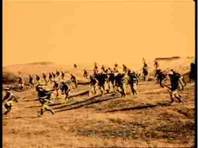 This extract of a newsreel of the First World War shows bicycle-borne bersaglieri demonstrating their riding skills on parade and on manoeuvres, and finally swarming up an equestrian monument to pose for the camera (David Robinson, The Pordenone Silent Festival Catalogue 2008)
This extract of a newsreel of the First World War shows bicycle-borne bersaglieri demonstrating their riding skills on parade and on manoeuvres, and finally swarming up an equestrian monument to pose for the camera (David Robinson, The Pordenone Silent Festival Catalogue 2008)
2. Et luftangreb paa Padua [An aerial attack on Padua], IT 1917
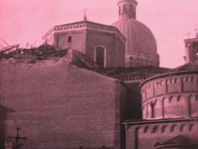 With Danish intertitles. Between 28-30 December 1917, Padua suffered three air raids by Austrian aircraft. After the first, The Times of London reported: “December 29. – Yesterday evening at 9 p.m. enemy airmen, true to their innate barbarian impulses, which have been revived by the defeat they suffered on December 26 at Treviso, bombarded the inhabited parts of Treviso, Montebelluna, Castelfranco, and Padua, all open cities…“In the centre of Padua, where the population is densest and the finest monuments are more numerous, eight bombs were dropped, killing 13 persons and wounding 60.Among the casualties, for the most part women and children, there are only six soldiers. No monument was damaged. There was no damage done or casualties caused in the other cities.” The subsequent raids, however, did cause damage to the Cathedral, bringing a protest from the Pope, as well as more casualties. The newsreel shows the Cathedral, among other extensive damage to the city.The film opens with soldiers inspecting a crashed Austrian plane, and ends with the funeral of the victims of the bombardment. (David Robinson, The Pordenone Silent Festival Catalogue 2008)
With Danish intertitles. Between 28-30 December 1917, Padua suffered three air raids by Austrian aircraft. After the first, The Times of London reported: “December 29. – Yesterday evening at 9 p.m. enemy airmen, true to their innate barbarian impulses, which have been revived by the defeat they suffered on December 26 at Treviso, bombarded the inhabited parts of Treviso, Montebelluna, Castelfranco, and Padua, all open cities…“In the centre of Padua, where the population is densest and the finest monuments are more numerous, eight bombs were dropped, killing 13 persons and wounding 60.Among the casualties, for the most part women and children, there are only six soldiers. No monument was damaged. There was no damage done or casualties caused in the other cities.” The subsequent raids, however, did cause damage to the Cathedral, bringing a protest from the Pope, as well as more casualties. The newsreel shows the Cathedral, among other extensive damage to the city.The film opens with soldiers inspecting a crashed Austrian plane, and ends with the funeral of the victims of the bombardment. (David Robinson, The Pordenone Silent Festival Catalogue 2008)
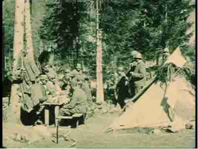 The unindentified documentary film, distributed in Denmark with Danish intertitles, is a compilation made of probably three (?) different pieces from different short documentaries about the Italian front. Since it was not possible to film the actual combat, its more about showing locations and logistics: trenches in the mountains, soldiers transporting war machinery in high altitude, elite Italian Alpini in mountaineering equipment, pigeons transporting messages etc.. The second part of the film shows a beautiful Italian landscape (“the poetry of waterfalls”), an imagery which completely contrasts the horrors of war. The third part shows the daily life of prisoners of war (POW): In the kitchen, doing exercises, etc. Like most of the so called “actualités”, this film serves propaganda purposes. All countries involved in the conflict wanted to show Neutral countries of their exemplary treatment of POWs; the truthfulness of these moving images is however difficult to judge.
The unindentified documentary film, distributed in Denmark with Danish intertitles, is a compilation made of probably three (?) different pieces from different short documentaries about the Italian front. Since it was not possible to film the actual combat, its more about showing locations and logistics: trenches in the mountains, soldiers transporting war machinery in high altitude, elite Italian Alpini in mountaineering equipment, pigeons transporting messages etc.. The second part of the film shows a beautiful Italian landscape (“the poetry of waterfalls”), an imagery which completely contrasts the horrors of war. The third part shows the daily life of prisoners of war (POW): In the kitchen, doing exercises, etc. Like most of the so called “actualités”, this film serves propaganda purposes. All countries involved in the conflict wanted to show Neutral countries of their exemplary treatment of POWs; the truthfulness of these moving images is however difficult to judge.
View an in-depth analysis of “Italien 1918” by Everett Sharp, military historian at Oxford University.
Dziga Vertov’s newsreel series “Kinonedelja”
from the collections of the Austrian Film Museum, Vienna
>> See the newsreels on EFG portal
The Austrian Film Museum has recently published its flagship online video project: Kinonedelja – Online Edition. 14 of the original 43 issues of the early Soviet newsreel series “Kinonedelja” (Kino-Week) survive in the Austrian Film Museum’s collection. The newsreels, which date from the years 1918 and 1919, are not merely significant for their depiction of life in the young Soviet Russia during the civil war, but also because they represent Dziga Vertov’s first contribution to cinema.
The films of Dziga Vertov have always played a key role in the collection, preservation and publication activities of the Austrian Film Museum since its foundation in the 1960s. It is therefore apt that Vertov’s first films should also be the first films presented on the Film Museum’s website.
